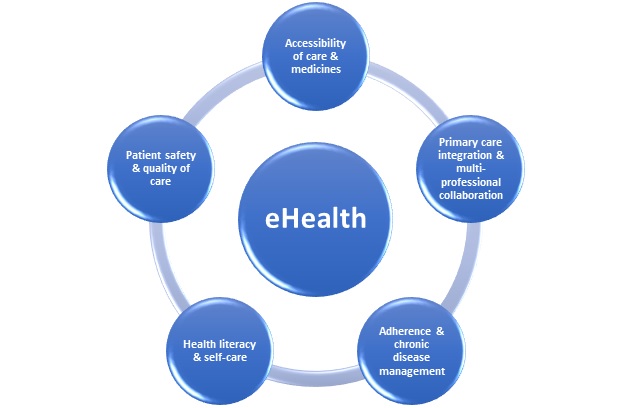In today’s technology-driven world, healthcare is evolving faster than ever before — and at the heart of this transformation is this. The term refers to the use of information and communication technologies (ICT) to support health services, patient care, medical education, and research. From telemedicine to digital health records, it is bridging the gap between patients and providers, making healthcare more accessible, efficient, and personalized.
This article explores what eHealth is, how it works, its major benefits, applications, and the challenges and opportunities shaping its future.
What Is eHealth?
It encompasses a broad range of digital tools and technologies that improve healthcare delivery and management. It includes electronic health records (EHRs), mobile health (mHealth) apps, telemedicine, remote monitoring devices, and AI-based diagnostic systems. The ultimate goal of eHealth is to make healthcare smarter, safer, and more accessible for everyone.
Unlike traditional systems that rely heavily on manual processes and paperwork, eHealth enables healthcare professionals to store, access, and share data digitally — ensuring faster diagnosis, better communication, and improved treatment outcomes.
How eHealth Works
At its core, it integrates digital communication technologies into medical processes. Here’s how it functions:
- Data Collection: eHealth systems gather patient data from various sources such as wearable devices, apps, and medical records.
- Storage and Security: Information is securely stored in electronic databases, accessible only to authorized users.
- Analysis and Diagnosis: AI algorithms and data analytics are used to detect patterns, predict health risks, and support medical decisions.
- Patient Interaction: Through telemedicine platforms and mobile apps, doctors can consult with patients remotely and provide real-time feedback.
- Continuous Monitoring: Wearable sensors track vital signs such as heart rate, glucose levels, and blood pressure, sending updates to healthcare providers.
This digital ecosystem ensures that healthcare is proactive, continuous, and patient-centered.
Key Components of eHealth
1. Telemedicine
Telemedicine allows healthcare professionals to diagnose and treat patients remotely via video calls or chat-based platforms. It’s especially beneficial for rural and underserved regions where medical access is limited.
2. Electronic Health Records (EHRs)
EHRs are digital versions of patient files that store comprehensiveHealth data — from medical history and prescriptions to lab results. With eHealth, EHRs are easily shareable among hospitals and specialists, reducing duplication and improving care coordination.
3. mHealth (Mobile Health)
Mobile health applications empower patients to track their own health, schedule appointments, receive medication reminders, and access test results from their smartphones.
4. Remote Patient Monitoring (RPM)
Devices like smartwatches and home diagnostic kits enable real-time monitoring of chronic conditions such as diabetes or hypertension. eHealth makes it possible to alert doctors immediately if an abnormality is detected.
5. Health Information Systems (HIS)
These systems support the management of hospital operations, including billing, scheduling, and inventory control — all powered by eHealth solutions.
Benefits of eHealth
1. Improved Accessibility
eHealth removes geographical barriers by enabling remote consultations and digital prescriptions. Patients no longer need to travel long distances to access care.
2. Enhanced Efficiency
Digitizing healthcare records and processes reduces administrative burden, minimizes errors, and speeds up decision-making.
3. Better Patient Engagement
eHealth tools encourage patients to take an active role in their health management through reminders, self-monitoring, and educational resources.
4. Cost Reduction
By minimizing hospital visits and paperwork, eHealth reduces healthcare costs for both providers and patients.
5. Data-Driven Decision Making
eHealth allows doctors to analyze large datasets to identify trends, optimize treatments, and make informed medical decisions backed by evidence.
Challenges of eHealth
While it offers numerous advantages, it also presents certain challenges that must be addressed:
- Data Security: Protecting sensitive medical information from cyberattacks is a top priority.
- Interoperability: Different systems must be able to communicate and share data seamlessly.
- Digital Divide: Not all populations have equal access to the internet or smart devices.
- Regulatory Compliance: eHealth systems must comply with health data regulations such as HIPAA and GDPR.
- Adoption Resistance: Some healthcare professionals and patients are slow to adopt digital tools due to lack of training or trust.
Overcoming these barriers requires collaboration between governments, healthcare providers, and technology developers.
eHealth vs. Traditional Healthcare
| Feature | eHealth | Traditional Healthcare |
|---|---|---|
| Access | Remote and 24/7 availability | In-person and limited hours |
| Data Storage | Digital and cloud-based | Paper-based |
| Efficiency | Automated and fast | Manual and time-consuming |
| Cost | More affordable | Often higher due to overhead |
| Patient Engagement | High with digital tools | Moderate and appointment-based |
This comparison highlights why healthcare systems around the world are transitioning to it for smarter, more sustainable medical practices.
The Future of eHealth
The future of it is driven by innovation and artificial intelligence. Upcoming trends include:
- AI and Predictive Analytics: Early disease detection through AI algorithms.
- Blockchain for Security: Ensuring transparent and tamper-proof patient data storage.
- Virtual Reality (VR) in Medicine: Used for surgical training and therapy.
- Wearable Tech Integration: Devices that monitor everything from heart rhythms to oxygen levels in real-time.
- Personalized Healthcare: Tailoring treatments to individual genetic and lifestyle profiles.
As these technologies mature, it will continue to redefine global healthcare systems, focusing on prevention, personalization, and proactive patient care.
How Governments and Organizations Support eHealth
Governments and international organizations are investing heavily in eHealth initiatives. Projects funded by the World Health Organization (WHO) and other global health agencies promote the adoption of digital tools in low-income countries. Many nations are developing eHealth policies to strengthen healthcare infrastructure and ensure data privacy.
Conclusion
eHealth is more than just a trend — it’s the future of medicine. By combining technology, data, and human expertise, it creates a connected ecosystem where healthcare is efficient, inclusive, and patient-focused.

